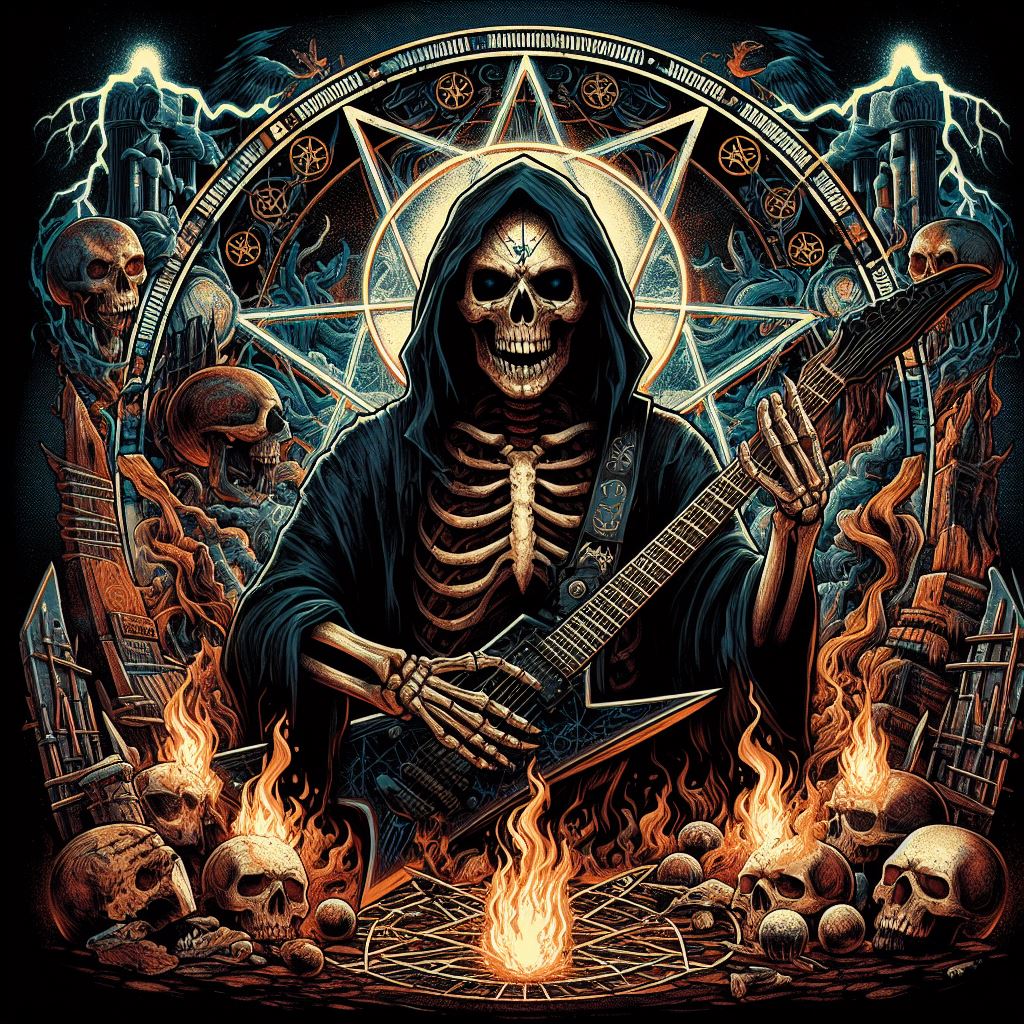Morbid Angel, forged in the fires of the Tampa, Florida death metal scene in 1983, stands as a titan of the genre. Their music, a whirlwind of technical brutality and unsettling atmosphere, has influenced countless bands and continues to inspire awe and terror in equal measure. This is the story of their journey, from humble beginnings to legendary status.
Early Days and Evolving Chaos (1983-1989):
The seeds of Morbid Angel were sown by guitarist Trey Azagthoth and drummer Mike Browning, both fueled by a fascination with the occult and extreme metal. Their early incarnation, under the name “Ice,” hinted little at the sonic devastation to come. The band cycled through vocalists, including a stint where Azagthoth himself handled the duties. Their sound, initially rooted in thrash metal, began to morph into a more chaotic and aggressive beast with the arrival of guitarist Richard Brunelle and bassist David Vincent.
Abominations in the Vault (1986-1991):
Morbid Angel recorded their debut album, “Abominations of Desolation,” in 1986. However, dissatisfied with the production, they shelved it, a decision that would leave fans waiting for years. Despite this setback, the band continued to hone their craft, unleashing a series of demos that showcased their burgeoning technical prowess and increasingly dark lyrical themes. These demos, with titles like “Scream Forth Blasphemies” and “Total Hideous Death,” caught the attention of the burgeoning death metal scene and cemented their reputation for sonic savagery.
Altars of Madness: A Genre-Defining Masterpiece (1989):
By 1989, Morbid Angel had solidified their lineup with the addition of drummer Pete Sandoval, whose lightning-fast blast beats would become a signature element of their sound. This new rhythm section, combined with Azagthoth’s unique and dissonant guitar work, David Vincent’s guttural vocals, and a newfound focus on atmosphere, culminated in their landmark debut album, “Altars of Madness.”
“Altars of Madness” was a revelation. It pushed the boundaries of death metal, incorporating complex song structures, intricate guitar work, and an atmosphere of chilling dread. Tracks like “Chapel of Ghouls” and “Altar of Madness” became genre staples, showcasing the band’s ability to weave technical mastery with pure sonic brutality. The album’s impact was undeniable, solidifying Morbid Angel’s place as one of death metal’s most important bands.
Dominion and Beyond: Experimentation and Internal Strife (1991-2002):
Morbid Angel continued to innovate with their follow-up albums, “Blessed Are The Sick” (1991) and “Dominion” (1995). “Blessed Are The Sick” further explored the band’s darker lyrical themes, while “Dominion” incorporated elements of progressive metal, showcasing Azagthoth’s ever-evolving songwriting. However, internal tensions began to rise within the band, leading to the departure of Vincent in 1996.
The band soldiered on, recruiting vocalist and bassist Steve Tucker for their next album, “Formulas Fatal to the Flesh” (1998). This album marked a shift towards a more technical and experimental sound, with some fans finding it less accessible than their earlier works. Despite the stylistic change, the album showcased the band’s continued musical prowess.
Heretic, Hiatus, and a Legacy Forged in Chaos (2003-Present):
The new millennium brought further lineup changes and a period of instability. After the release of “Heretic” in 2003, the band went on hiatus. Azagthoth, the band’s sole remaining original member, has continued to write and record music sporadically, but Morbid Angel has not released a full-length studio album since.
Despite the lack of new material, Morbid Angel’s legacy remains untarnished. Their influence on death metal is undeniable, inspiring countless bands across the globe. Their music continues to be celebrated for its technical mastery, unsettling atmosphere, and unwavering commitment to pushing the boundaries of extreme metal.
Even with an uncertain future, Morbid Angel’s impact on the world of heavy music is undeniable. They stand as a testament to the power of innovation and the enduring appeal of darkness and chaos.

Leave a Reply
You must be logged in to post a comment.